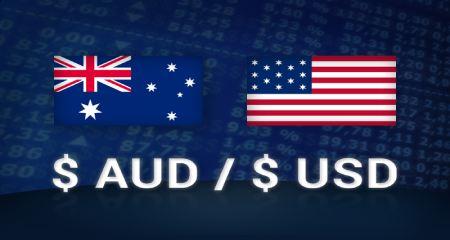
AUD/USD reverses an intraday slide amid a modest USD pullback
The AUD/USD pair attracts some dip-buying near the 0.6500 psychological mark on Tuesday and builds on its steady intraday ascent through the first half of the European session. Spot prices, however, lack bullish conviction and currently trade around the 0.6540-0.6535 region, nearly unchanged for the day and below a multi-day high touched earlier today. A combination of factors prompts traders to take some profits off their US Dollar (USD) bullish positions, especially after the recent runup to over a two-month high, which, in turn, is seen lending some support to the AUD/USD pair.
A tentative deal to raise the $31.4 trillion debt ceiling and avert an unprecedented American default boosts investors' confidence, which is evident from a generally positive tone around the equity markets. This, along with a sharp intraday slide in the US Treasury bond yields, undermines the safe-haven buck. That said, growing worries about slowing global economic growth, particularly in China, and fresh US-China tensions might cap any optimism in the markets. It is worth recalling that data from China recently showed that the world's second-largest economy underperformed in April. Furthermore, China declined a request for a meeting between US defense secretary Lloyd Austin and Chinese defense minister Li Shangfu at a forum in Singapore later this week, fueling fears of worsening ties between the world's two largest economies.
Moreover, the downside for the USD is likely to remain limited amid expectations that the Federal Reserve will keep interest rates higher for longer. In fact, the markets are now pricing in a greater chance of another 25 bps lift-off at the next FOMC policy meeting in June. This, along with speculations that the Reserve Bank of Australia (RBA) might refrain from hiking in June, bolstered by softer domestic data, should contribute to capping the AUD/USD pair and suggests that the path of least resistance for spot prices is to the downside. Market participants now look to the release of the Conference Board's US Consumer Confidence Index, due later during the early North American session. This, along with the US bond yields and the broader risk sentiment, will influence the USD price dynamics and produce short-term trading opportunities around the AUD/USD pair. The focus will then shift to RBA Governor Philip Lowe's speech, the monthly Australian consumer inflation figures, and the official Chinese PMI prints, due during the Asian session on Wednesday.
Moreover, the downside for the USD is likely to remain limited amid expectations that the Federal Reserve will keep interest rates higher for longer. In fact, the markets are now pricing in a greater chance of another 25 bps lift-off at the next FOMC policy meeting in June. This, along with speculations that the Reserve Bank of Australia (RBA) might refrain from hiking in June, bolstered by softer domestic data, should contribute to capping the AUD/USD pair and suggests that the path of least resistance for spot prices is to the downside. Market participants now look to the release of the Conference Board's US Consumer Confidence Index, due later during the early North American session. This, along with the US bond yields and the broader risk sentiment, will influence the USD price dynamics and produce short-term trading opportunities around the AUD/USD pair. The focus will then shift to RBA Governor Philip Lowe's speech, the monthly Australian consumer inflation figures, and the official Chinese PMI prints, due during the Asian session on Wednesday.
